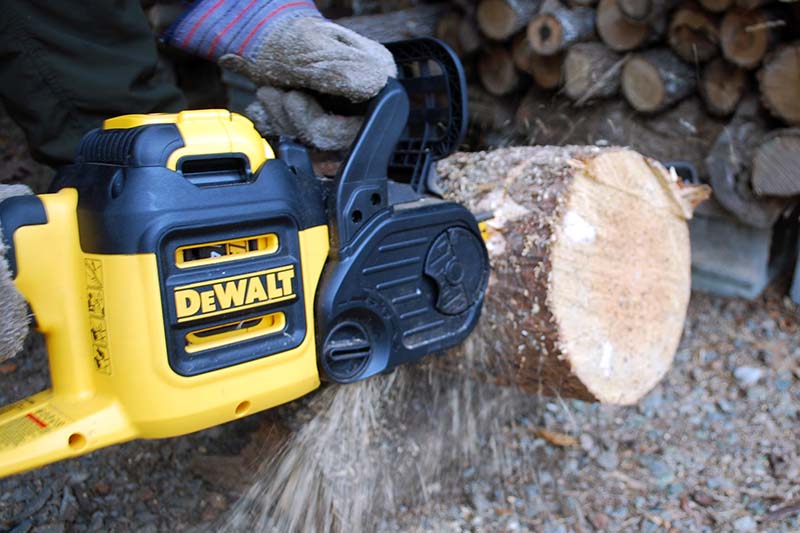It occurred to us that an article on chainsaw basics might be just the ticket for beginners. A refresher might also help new apprentices just getting into the field. The average chainsaw injury requires 110 stitches. Any tips we can impart along the way to helping you work more safely and confidently marks a big potential win in our book.
For product recommendations, see our Best Chainsaws Buying Guide.
Table of Contents
- Our Top 4 Chainsaw Basics Dealing with Safety
- Chainsaw Basics 101: Check the Chain Tension
- Check That Bar & Chain Oil
- Chain Brakes are a Handy Safety Tool
- The Basics of Keeping a Chainsaw Chain Sharp
- Consider Using Bio or Vegetable-based Bar and Chain Oil
- The Basics of Not Letting Your Chainsaw Mess Up Your Floor
- Final Thoughts
Our Top 4 Chainsaw Basics Dealing with Safety
Let’s start with safety. Following are our biggest top 4 chainsaw basics for beginners that deal with safety. You can see our full chainsaw safety tips article for a more thorough breakdown:
- Always wear protective gloves, boots, chaps, and eye protection
- Never let go of your grip on a saw if it kicks back. Hold tight, and rely on the brake to stop the chain before it hits you.
- On saws without a brake, hold even tighter!
- Never use a saw “left-handed”—that is, with your left hand holding the rear handle. Your right arm is put in a dangerous position over the bar, and the brake will not protect you.
After this, it comes down to understanding features and the various maintenance issues you may encounter with these tools.
Chainsaw Basics 101: Check the Chain Tension
One of the most fundamental chainsaw use recommendations we can think of deals with checking the chain tension. Do this often. In terms of chainsaw basics, you can’t get much simpler.
The chain on a chainsaw should never feel slack. You should be able to lift it 1/4-inch or so off the bar easily with your fingertips—but no more. A brand new chain or even a cold chain that heats up during use may require frequent adjustment. We regularly make several adjustments per hour when breaking in a new chain.
Also, never leave a warm chain tight on the bar. Heat expands steel, so a tight hot chain that cools over time can bend the shaft on a saw or otherwise strain the bar and the tool itself. You always want to loosen a hot chain when you put up the saw.
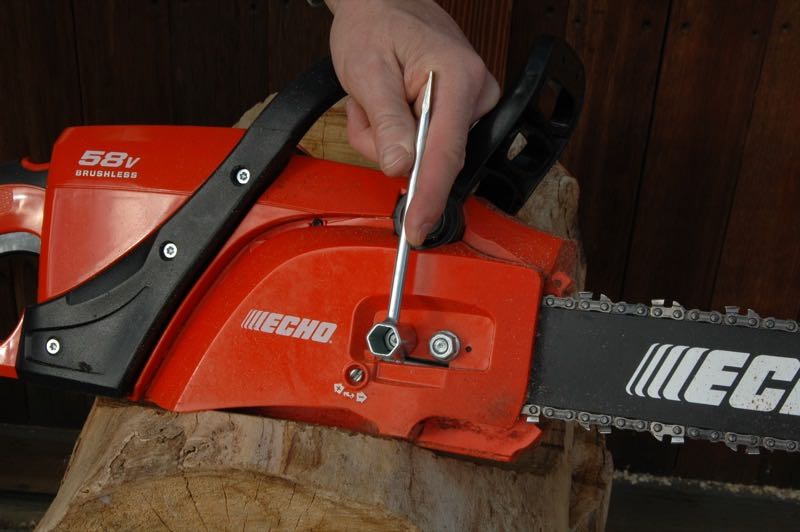
Check That Bar & Chain Oil
Most people know they need bar and chain oil. However, we run into many who don’t know how to tell if that oil is doing its job. To make sure the oil is flowing where and as it needs to, hold the tip of the running saw in front of a surface you don’t mind getting some oil on it. Next, oull the trigger and ensure that you see a small amount of oil slinging off the chain.
As you cut, watch the level of oil in the tank and keep the hole that feeds oil to the bar clear of debris. You don’t want to cut for long without oil on the bar and chain. You can quickly create excessive heat and wear on the bar, wear down the bottom of your chain, and even cause the motor to overheat.
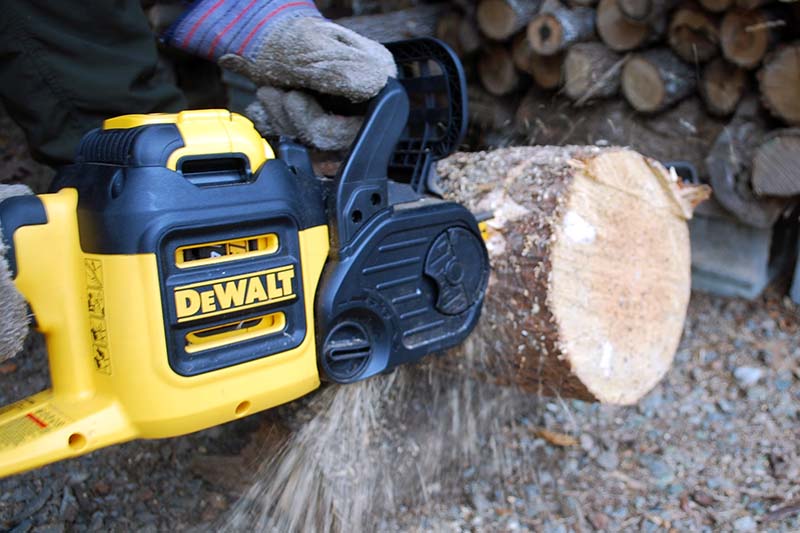
Chain Brakes are a Handy Safety Tool
One of the chainsaw basics we hope no one forgets has to do with how you can use a chainsaw brake as a safety. Flip the brake forward to the stop position any time you need to move around or set down the saw. Defnitely engage the chain break any time you need to check the chain tension with your fingers. That should be periodically and regularly, but the way!
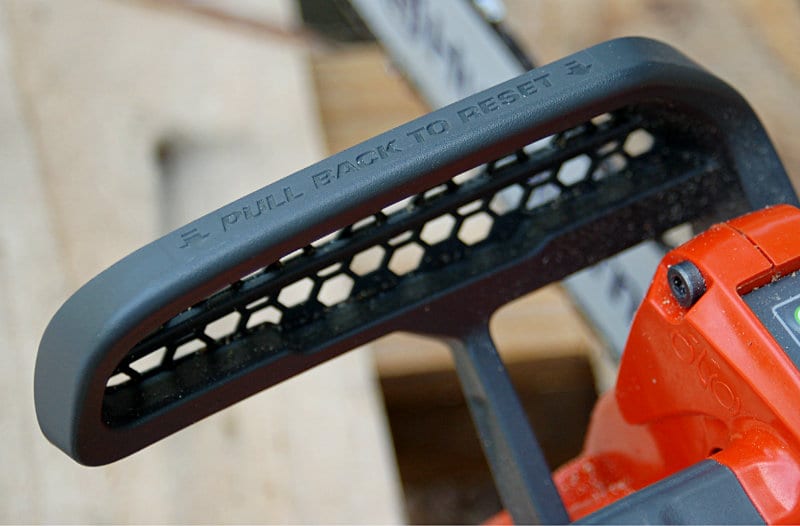
We make jokes about “safety third”, but using the chainsaw brake as a safety switch could be a basic tip that keeps you from getting injured.
The Basics of Keeping a Chainsaw Chain Sharp
For optimal cutting, you need to sharpen your chainsaw chains. We see so many people complain about their chainsaws when, in fact, they simply need to sharpen the chain. A dull chain can extend your cutting time by a factor of three or more. It also makes the saw work harder leading to premature wear and maintenance.
Even the best battery-powered chainsaws come spec’d to work at their optimal capability. That means a full battery and a sharp chain. If you want the most performance one of these saws has to offer, you better keep that chain sharp! If not, your cutting speed will plummet.
How does a chain get dull? Obviously, the act of normal cutting wears down the edges of your chain teeth. However, if you accidentally make contact ith the dirt or something harder (rocks or concrete) expect to have dulled—at least somewhat—every tooth on your chain. Remember, that chain spins at a really quick speed. It takes no time at all for every tooth to make it around and encounter that surface.
Check your chain sharpness often and take note when cuts seem to be taking longer than normal.
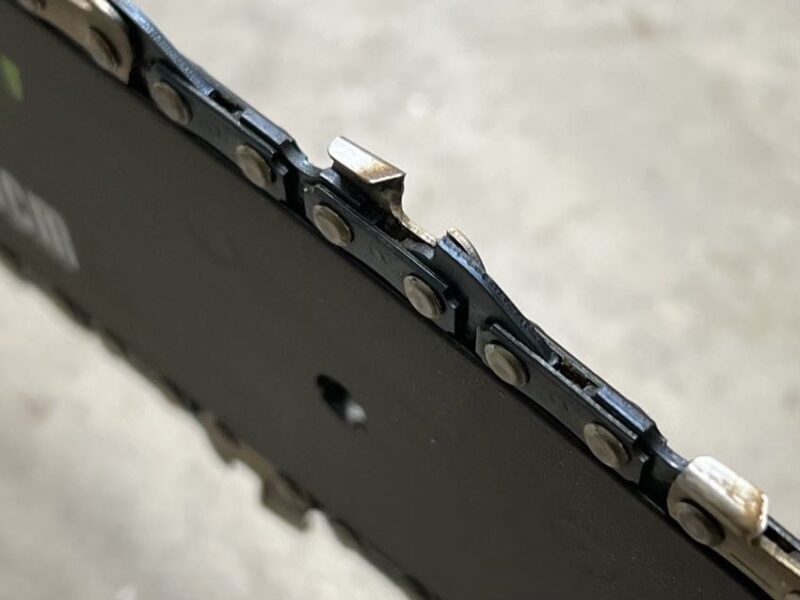
Consider Using Bio or Vegetable-based Bar and Chain Oil
A long time ago, one of our professional reviewers suggested the use of biodegradable vegetable-based bar and chain oil. His case in point had to do with cutting up a large amount of firewood. By the time you finish, you may have ejected more than a gallon’s worth of petroleum oil onto your property.
Aside from the toxicity of standard bar and chain oil, wood chips soaked in it simply take forever to decompose.
Vegetable oil, however, biodegrades more naturally. Thought it can harden up more quickly when exposed to air, we haven’t had any problems even when storing a saw for many months. Just remember to clear out the oiler hole, and don’t leave it in the saw when winterizing it. When in doubt, several companies like DeWalt and Oregon make biodegradable chain oil .

The Basics of Not Letting Your Chainsaw Mess Up Your Floor
Many chainsaws saws leak oil when left sitting. You either need to drain the tank or prepare for a puddle of oil under those saws when you store them after use. However, some higher-priced chainsaws include oiler valves. These should close and prevent leaking like typical saws. If those saws leak, you typically have an issue that you can solve with some basic maintenance.
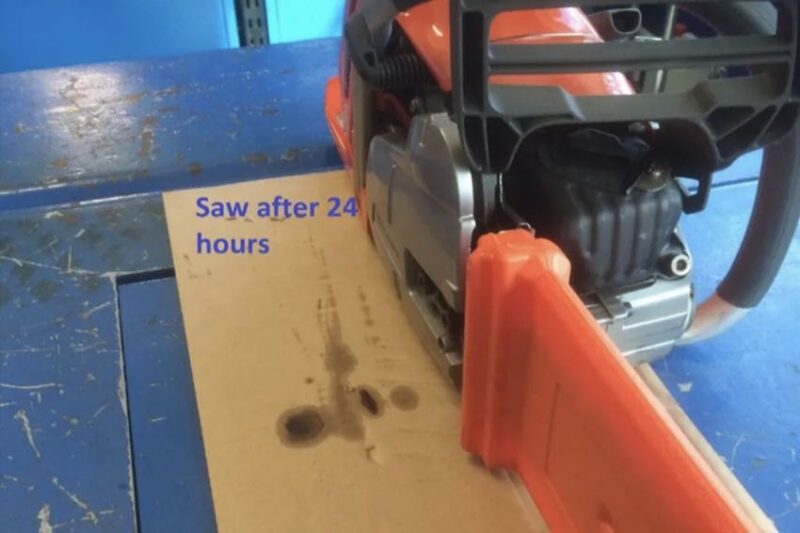
Final Thoughts
Hopefull, this list of chainsaw basics helps you get up and running. The idea is to get you started with some basic know-how. These tools can help you get a lot of work done, but you also need to take precautions when using them and treat these tools with the care they deserve.
If we left anything out, please feel free to leave a comment below.

